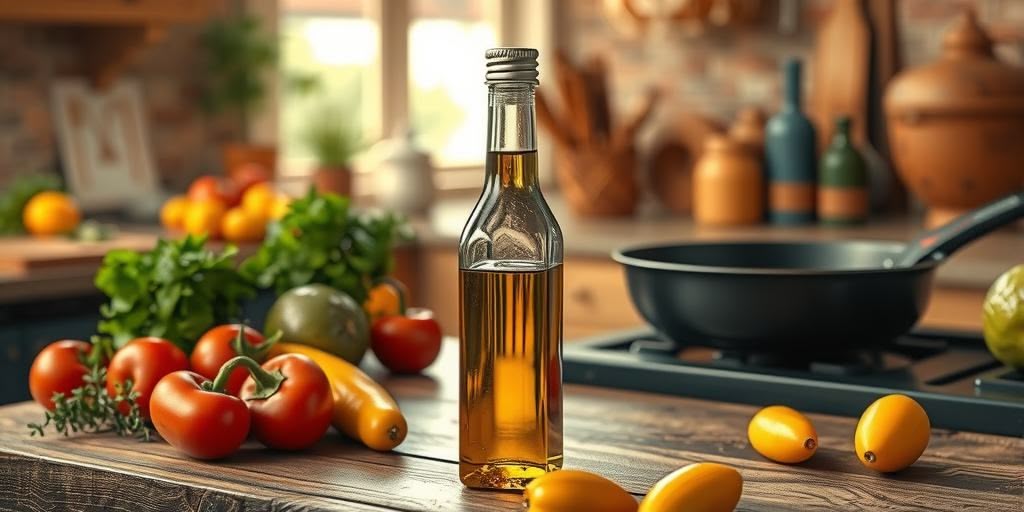The ancient Roman diet was diverse and heavily relied on cereals, especially wheat, which was used to make bread. Barley served as porridge and animal feed. Vegetables like legumes, leafy greens such as kale and cabbage, as well as roots like onions and garlic were staples in their meals. Fruits such as apples, figs, and pears were commonly enjoyed fresh or dried. Dairy included various cheeses and milk for cooking. Meat from pigs, cows, or birds appeared frequently too, often preserved by salting. They flavored dishes with garum (a fish sauce) and herbs while wine was the favored drink during feasts that showcased wealth with multiple courses.

Common Cereals in the Ancient Roman Diet
Cereals formed the backbone of the ancient Roman diet, with wheat being the most prominent staple. This grain was primarily used for making bread, which was a fundamental part of Roman meals. Different varieties of wheat, such as spelt and emmer, were cultivated and valued for their quality. Barley also played a significant role, often prepared as porridge or used as animal feed, highlighting its versatility in both human and livestock diets.
In addition to these grains, Romans incorporated legumes into their daily fare. Lentils, chickpeas, and various beans not only provided essential protein but also complemented the cereals, making meals more nutritious. The consumption of these grains and legumes reflects the Romans’ agricultural practices and their ability to adapt to the crops available in different regions of the empire. This diverse grain-based diet laid the foundation for many of the traditional dishes that have influenced modern Mediterranean cuisine.
| Cereal | Uses |
|---|---|
| Wheat | Primary staple, used for making bread including varieties like spelt and emmer |
| Barley | Used for porridge and as animal feed |
Popular Vegetables of Ancient Rome
Vegetables played a significant role in the ancient Roman diet, providing essential nutrients and variety. Legumes were particularly important, with lentils, chickpeas, and beans being staples. These not only offered protein but also were easy to cultivate. Leafy greens, such as kale and cabbage, were commonly consumed, often mixed with other ingredients in salads or cooked dishes. Wild greens, foraged from the countryside, added flavor and nutrition to meals.
In terms of root vegetables, onions and garlic were popular for their strong flavors and health benefits. Carrots, although different from the orange varieties we know today, were also part of the Roman diet. These vegetables were often prepared through boiling or stewing, sometimes mixed with grains or meats to create hearty meals. Additionally, Romans enjoyed pickling some vegetables, preserving them for later use, especially during winter months. This diverse selection of vegetables showcased the Romans’ agricultural skills and their ability to adapt to different climates and regions.
Fruits Frequently Eaten by Romans
Fruits played an important role in the diet of ancient Romans, both as snacks and as ingredients in various dishes. Common fruits included apples, pears, grapes, figs, and pomegranates, which were enjoyed fresh or dried. Grapes were particularly significant, not only for eating but also for wine production. Figs were often consumed fresh or dried, making them a popular choice throughout the year. Pomegranates, with their juicy seeds, were valued for their flavor and nutritional benefits. Additionally, dried fruits like dates and figs were essential for preserving food and providing energy, especially during long journeys or in times of scarcity. Romans also used fruits in desserts, mixing them with honey and nuts to create sweet treats. Overall, the variety of fruits available showcased the agricultural diversity of the regions they inhabited.
Dairy Products in Roman Meals
Dairy products played a significant role in the ancient Roman diet, providing essential nutrients and flavors. Cheese was particularly popular, with a variety of types made from the milk of cows, goats, and sheep. Romans enjoyed both fresh and aged cheeses, often incorporating them into their meals or eating them as snacks. Milk itself was used in cooking, although it was less common to drink it plain. Instead, it was often transformed into cheese or used in sauces and dishes.
The production of dairy products was influenced by local practices and availability. For instance, in rural areas, households would keep their own animals for milk, while urban dwellers relied on vendors for their dairy needs. Additionally, dairy products were often consumed in combination with other staples, such as bread, creating simple yet nutritious meals. Overall, dairy contributed to the variety and richness of the Roman diet, reflecting the agricultural diversity of the empire.
Types of Meat and Fish Consumed
Meat and fish played a significant role in the ancient Roman diet, varying by social class and region. Common meats included pork, which was highly favored for its versatility and flavor. Beef was also consumed, though less frequently, as cattle were often used for labor. Poultry, including chickens and geese, was popular, especially among the wealthier classes. To preserve these meats, Romans often used methods like salting or smoking, ensuring they could store food for longer periods.
Fish and seafood were staples, particularly in coastal areas. Fresh catches included various types of fish, such as mullet and bass, while salted fish, like anchovies and sardines, were widely traded. Garum, a fermented fish sauce, was a common condiment that added flavor to many dishes, demonstrating the Romans’ sophisticated culinary practices. Overall, the consumption of meat and fish reflected both the local resources and the social status of individuals, with feasts often showcasing more exotic options to impress guests.
Essential Condiments and Flavorings
In ancient Roman cuisine, condiments and flavorings played a crucial role in enhancing the taste of various dishes. One of the most popular was garum, a fermented fish sauce that added a distinct umami flavor. It was made by layering fish and salt in containers and allowing it to ferment under the sun. This pungent condiment was used generously across all social classes and could be found in many dishes, from meats to vegetables.
Herbs and spices were also important for flavoring. Romans commonly used dill and coriander to season their meals, while pepper, which was more of a luxury item, was sought after for its heat and depth. These flavorings were not only for taste but also served to mask the flavors of less-than-fresh ingredients.
Additionally, vinegar was used in various forms, both as a preservative and a flavoring agent. It was often mixed with water to create posca, a drink favored by soldiers and the lower classes. Such condiments made ancient Roman food diverse and flavorful, showcasing their culinary ingenuity.
Importance of Olive Oil in Cooking
Olive oil was a cornerstone of the ancient Roman diet, valued not just for its flavor but also for its versatility in cooking. It was used for frying, dressing salads, and as a base for sauces. Romans often drizzled olive oil over vegetables and bread, enhancing the taste of simple dishes. Beyond its culinary uses, olive oil held cultural significance, symbolizing wealth and health. It was a common gift and was often featured in banquets. The process of extracting olive oil was labor-intensive, making high-quality oil a prized commodity. Regions like Campania and Sicily were known for their superior olives, and trade routes helped distribute this essential ingredient throughout the empire.

Common Beverages in Ancient Rome
Wine was the most popular drink in ancient Rome, often enjoyed by people of all social classes. It was typically diluted with water, as undiluted wine was considered too strong. Romans produced various types of wine, from sweet to dry, and regions like Campania and Burgundy were well-known for their vineyards. In addition to wine, posca was a common beverage, especially among soldiers and lower classes. This drink was a mixture of vinegar and water, sometimes flavored with herbs. It was refreshing and helped to quench thirst, particularly in hot weather. Other beverages included mulled wine, which was spiced and heated, and various herbal infusions. While wealthy Romans might indulge in exotic drinks, the majority relied on these simple yet effective choices to stay hydrated.
Sweet Treats and Desserts
Ancient Romans had a variety of sweet treats that added flavor and enjoyment to their meals. Honey was the primary sweetener, used in many dishes, from pastries to sauces. It was prized not only for its sweetness but also for its preservative qualities. Romans often combined honey with fruits and nuts to create simple but delicious desserts. Dried fruits, like figs and dates, were popular snacks and ingredients in various dishes. Sweets made from nuts, such as almonds and walnuts, were also enjoyed, sometimes coated in honey or mixed into cakes. Additionally, cakes and pastries, often flavored with spices like cinnamon and anise, were served during special occasions and feasts, showcasing the Romans’ appreciation for sweet flavors.
Cooking Methods Used by Romans
Romans employed various cooking methods that shaped their meals. Boiling was a common technique, particularly for preparing grains and legumes. Stews made from meats and vegetables were also popular, allowing for a blend of flavors and nutrients. Baking was essential for creating bread, a staple of the Roman diet, with ovens being a key feature in many homes. Additionally, roasting meats over an open flame provided a distinct flavor that was highly appreciated. These methods not only reflected the available technology but also the Romans’ culinary creativity.
Social Aspects of Roman Food Culture
Food in ancient Rome was deeply intertwined with social status and community. Wealthy Romans often hosted lavish banquets with multiple courses, showcasing their affluence through exotic ingredients like peacock and dormice. These feasts were not just about sustenance; they were social events that reinforced social hierarchies and relationships. The layout of a banquet would reflect one’s status, with the most honored guests reclining closest to the host.
In contrast, the lower classes relied on simpler fare. Street vendors offered quick meals like bread, cheese, and fried fish, which were affordable and accessible. This street food culture illustrated the everyday life of ordinary Romans, emphasizing community and social interaction in public spaces.
Additionally, food was a central part of festivals and religious ceremonies, where offerings to the gods included grains, fruits, and meats. These activities fostered a sense of unity among community members, as they gathered to celebrate shared beliefs and traditions. Through both grand feasts and simple meals, the food culture of ancient Rome reflected the complexities of its society.
Influence of Geography on Roman Diet
The geography of the Roman Empire played a significant role in shaping its diverse diet. Regions with fertile land, like the Po Valley in Northern Italy, produced abundant grains, making wheat a staple food. In contrast, coastal areas benefited from the fishing industry, leading to a diet rich in various fish and seafood. The Mediterranean climate allowed for the cultivation of olives and grapes, essential for producing olive oil and wine, respectively. Furthermore, areas conquered by Rome, such as North Africa and parts of the Middle East, introduced new ingredients like spices and exotic fruits, enhancing the Roman palate. This geographical diversity meant that local specialties were incorporated into the larger Roman diet, making it a patchwork of flavors and ingredients that reflected the empire’s vast expanse.
Frequently Asked Questions
1. What were some common types of bread in ancient Rome?
In ancient Rome, bread was a staple food. They made several types, including panis quadratus, a flat bread, and more refined loaves for the wealthy.
2. Did ancient Romans eat meat? If so, what kind?
Yes, ancient Romans did eat meat. They commonly consumed pork, beef, and poultry, and some even had exotic meats like game or peacock.
3. What kinds of fruits and vegetables were popular in ancient Roman diets?
Ancient Romans enjoyed a variety of fruits and vegetables, such as grapes, apples, olives, carrots, and cabbage. They used these foods in many dishes.
4. Did Romans use spices and herbs in their cooking?
Absolutely! Romans loved to use spices and herbs to flavor their food, including things like garlic, coriander, and pepper, which were seen as luxuries.
5. What was the importance of wine in ancient Roman meals?
Wine was very important in ancient Roman culture. They often drank it with their meals, and it was a symbol of hospitality and social status.
The ancient Roman diet was diverse, featuring cereals like wheat and barley, various vegetables such as legumes and leafy greens, fruits including apples and figs, and dairy products like cheese and milk. Romans consumed meats like pork and beef, along with fish and seafood, often flavored with condiments like garum. Olive oil was essential in cooking, while wine and posca were common beverages. Sweets included honey and dried fruits, and cooking methods involved boiling, baking, and stewing. Food also played a significant role in social status, with extravagant banquets for the wealthy and simple street food for the lower classes.

